
Whilst browsing on one of my favourite food blogs, The Passionate Cook, I came across a food blogging event which appealed. Having a very sweet tooth, I couldn't resist the temptation of partaking in 'sugar high fridays', an event created by Jennifer at The Domestic Goddess. The idea being to make something sweet and delicious around a theme of the host's choosing.
This month, the idea is to re-create a local speciality. Hmmm. Well. I live in Battersea. London. A veritable melting pot no less, but hardly the scene for a truly local, regional speciality. So, I decided to cheat a little. Since I was tiny, I have spent time every August in a certain seaside village in North Wales. I have so many food memories associated with long, hazy summer holidays in Abersoch. Freshly caught mackerel fried in Welsh butter for breakfast (really), sandy sandwiches and pork pies on the beach, delicious local lamb, Welsh cakes for tea, orange and lemon sparkle ice lollies... But probably my favourite speciality is... Bara Brith.
Bara Brith translates as 'speckled bread'. It is a type of traditional tea-bread speckled with dried fruits. It is delicious spread with good Welsh butter for a treat at breakfast and particularly good when toasted!
 The high number of excellent bakeries around my holiday destination mean that I have never attempted to make this gorgeously spicy bread, but I have always craved it from time to time on returning home. You just don't see it here. I'd never even given much thought as to how it was made. Until now. The 'nudge' I needed to give it a go.
The high number of excellent bakeries around my holiday destination mean that I have never attempted to make this gorgeously spicy bread, but I have always craved it from time to time on returning home. You just don't see it here. I'd never even given much thought as to how it was made. Until now. The 'nudge' I needed to give it a go.The deliberate mistake....
Ah. Yes. Well, post bara-brith-baking and pre-posting, I returned to the Sugar High Friday post and discovered that I am supposed to be making a dessert of some kind. Ooops. This is a teabread. Not a dessert. Though it makes an excellent bread and butter pudding! I am hoping that Johanna will let me through all the same, it being my first attempt at this event (and considering the 'bara brith journey' I have been on since starting on this project)!
Step One - What makes the perfect Bara Brith?
Google. 'Bara Brith Recipe'. That should do it. How wrong could I be?Little did I know that there were so many versions of this fruity bread. Some used yeast, some used baking soda. Some soaked the fruit in tea overnight, some added it dry. Some had many ingredients. Some had just a few.
I had serious decisions to make. What to me were the essential components of Bara Brith?
1) To me, it is definitely more of a 'bread' than a 'cake'. Apparently, in North Wales, the 'bread' approach is favoured, whilst in the South, baking soda is used as the raising agent. As my affinity is with North Wales, I feel duty-bound to reproduce the yeasted version. Besides, you can't toast a cake, and that is my favourite way to eat it.
2) Tea. In my mind, tea is essential. Not only should the fruit be soaked overnight in black tea, but that tea should be incorporated into the loaf for flavour and colour.
 3) Spice. The loaf should be quite spicy.
3) Spice. The loaf should be quite spicy.Seems quite simple, huh? Well, that is where you would be wrong. I was unable to find a recipe that involved soaking the fruit in tea AND using yeast. It was either/or. Baffled, I decided to e-mail a Welsh bakery, Popty Pen Uchaf. There I'd get the definitive answer. Thank you to Eleri for the following answer -
'Dear Antonia
Hello ,thanks for the e mail regarding bara brith recipes, At my bakery I use a traditional family recipe which contains fruit ,demerara sugar, soaked in black tea overnight, and then I add this mixture to S R flour to which a small amount of butter has been rubbed in ,and finally free range eggs are mixed in before putting in the tins. I have made some using yeast but I found out they did not keep so well but they were really nice toasted ,the recipe with tea will not toast ,good luck with your research!
Regards Eleri'
Hello ,thanks for the e mail regarding bara brith recipes, At my bakery I use a traditional family recipe which contains fruit ,demerara sugar, soaked in black tea overnight, and then I add this mixture to S R flour to which a small amount of butter has been rubbed in ,and finally free range eggs are mixed in before putting in the tins. I have made some using yeast but I found out they did not keep so well but they were really nice toasted ,the recipe with tea will not toast ,good luck with your research!
Regards Eleri'
Useful. But still appeared to be either/or. I wanted BOTH. No compromise. So, I bravely decided to go it alone (drum roll, please). This was an interesting idea considering that I am not the bread-baking sort. At all. I have, on occasion baked bread. And enjoyed it. I might even go so far as to say that I have found it to be therapeutic. But I've never been entirely thrilled with the result. Rather, it has been good, but nothing like as good as freshly baked bread from my local bakery; The Lighthouse Bakery. Horribly upsetting, however, I learn that the bakery had recently re-located. So perhaps it is time to learn...
Step Two - The Recipe
I decided that the most reliable source was probably Delia. Having spent her childhood in Wales and being the reliable sort, I felt confident that she would know best, despite no mention of the black tea. Her recipe states that yeast makes the best bara brith for toasting (hoorah) and that the bread should be very spicy (double hoorah).
I decided to follow her recipe with a few subtle alterations. I would soak the fruit over night in hot black tea (one bag of Earl Grey and one of Breakfast Tea for argument's sake) and use luke warm tea in place of the milk in her recipe.
Step Three - Biting the bullet and making the bread...
I won't repeat the recipe here as you can go straight to her site (and this post is already an epic). I followed it to the tee, kneading the dough until soft and elastic...
 I then left it to rise for nearly two hours. Despite my kitchen being quite warm, it didn't seem to double in size. I tried twice, on two consecutive nights. It just didn't seem to rise quite enough. Better on night two though, so I persevered. I knocked back the dough and added in the nicely plumped-up fruit.
I then left it to rise for nearly two hours. Despite my kitchen being quite warm, it didn't seem to double in size. I tried twice, on two consecutive nights. It just didn't seem to rise quite enough. Better on night two though, so I persevered. I knocked back the dough and added in the nicely plumped-up fruit.Problem. Yes. The fruit was very moist, plumped up with all that tea. Kneading it into the dough was incredibly sticky and tricky. What a mess! I had to add more flour. And it was hard to impregnated the elastic dough with the fruit. Next time I'd add the fruit in the initial mixing stage.
I popped the dough into the tin to prove...
 It rose. But again, not as much as I would have expected. But the dough sprung back slowly when pressed lightly - the sign of a risen dough.
It rose. But again, not as much as I would have expected. But the dough sprung back slowly when pressed lightly - the sign of a risen dough.I popped it in the oven for half an hour, then covered with foil for the remaining half hour. The flat filled with the most glorious smell. No doubt the neighbours thought I was mad - by the time I took the loaf out, it was midnight. A strange time to be baking!
 The worst part was having to wait until morning to sample the wonderful looking and smelling bread.
The worst part was having to wait until morning to sample the wonderful looking and smelling bread.Early this morning, I sliced into the (quite firm) loaf. The fruit was not as well distributed as I would have liked and it was a little dense and yeasty. But it was pretty delicious, I have to say. Even better toasted... Fruity and spicy... Not bad for a first attempt.
 Step Four - You live and learn. What I'd do differently next time...
Step Four - You live and learn. What I'd do differently next time...1) I think there maybe the yeast I used wasn't at its best. I'll buy new next time.
2) I'll squeeze some of the tea from the soaked fruit and mix it in in the initial mixing stage and add slightly less liquid to make a drier dough.
3) I'll add more mixed spice - I like it really spicy.
4) I'll use muscovado sugar for a deeper flavour and colour.
5) I might try lapsang souchong tea for a slight smoky flavour.
6) I'll try the no yeast recipes and stop being so prejudiced!
If anyone has any suggestions for improvements, I'd be only to happy to hear. As I mentioned, I am not a bread-baker (more of a cake baker) and so could use the advice!




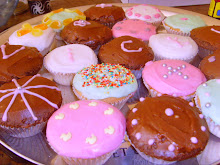
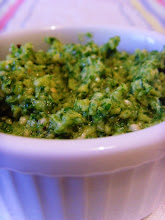
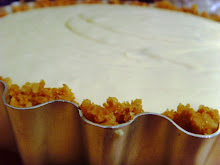
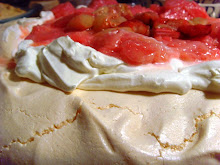
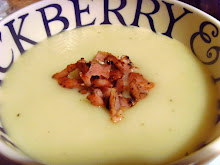










12 comments:
Looks amazing. I've made Delia's recipe before, but, terrible cheat that I am, I used my breadmaker (oh the shame!!!!!). It didn't turn out half as well as yours. I must try your method sometime.
Thanks, Lynn. No shame in using a breadmaker - I wish I had one! I'm all for time-saving devices.
of course this qualifies! sweet and local - that's all the criteria! what a great piece of research for a lovely cake... a bit of variation from sultana scones won't go amiss! thanks for participating!
Greetings from across the pond.
Having lost my great aunts' bara brith version, I've been working on finding something similar. For my Christmas tea, I made the southern-style version - fruit soaked in tea, using chemical leavening. I was pleasantly surprised by the results.
My mother maintains that my aunt used potato water and yeast in hers. It sounds like leavened potato bread with dried fruit and spices. Being bread-challenged, I think I'll try to use the bread machine, too.
I really appreciate your research and analysis. Thanks!
Nightshade - thank you for stopping by. I've heard about using potato water, but never tried it. Sounds like an interesting method. And I must try the southern version.
I recently made a loaf of Bara Brith and just posted about it. I stole your idea of soaking the dried fruit in tea before incorporating the fruit into the dough and gave you credit on my blog.
Your loaf looks lovely, quite successful. Isn't fresh baked bread the best!
isaiah321Thanks Lynn. My da' was a baker and made Bara Brith in much the same way you describe, but he would prove it over night before baking. I have been trying to find his recipe for years. Now thanks to you I will try again as I make my own bread the old fashioned way, but never had any success with the elusive Bara Brith. David
I found this entry when I was trying to find a recipe for Bara Brith. I went with one that uses tea - which I found on the *North* Wales Tourist website. It had marmalade as an ingredient (which I swapped for ginger conserve). If it's meant to be a bread, I also wondered about using bread flour when making it next time.
Liz in Essex
Hi - I used to make a version that had grated orange zest in it as well as the mixed spice. I have also seen one that has grated lemon peel. I am currently making one with the soaked dried fruit, demerara sugar, mixed spice and self raising flour. I am also going to add some marmalade. The freezing weather we are having in London is perfect for this recipe.
Hiya! I am 12 years old (13 in less than 40 days!) and My nan and I often bake Bara Brith the Sothern way, with the fruit soaked in tea, but we don't often put baking soda in at all - just self raising flour! =) I made one last night, and entered it into a cooking category at my Village's horticultural society show, so wish me luck! =)
Hi, found your page when I was trying to find out if bara brith should be a yeasted bread or a tea bread. Along with other sites it seems to me that there's a north/south divide so both are traditional.
My immediate thought on how to include tea in a yeasted recipe as an alternative way to soaking the fruit was to reactivate the dried yeast in warm tea rather than warm water.
I have no idea if this would work or if there is something in tea that would stop the yeast action. It might be worth a try.
If I have a go I'll let you know how I got on.
I found your blog while searching for a Bara Brith recipe that used yeast- like you I think of it more as a yeast bread than a quick bread. I loved your blog, I am definitely going to try Delia's recipe using your recommendations. Thank you so much for setting the trail that I can follow. :)
Post a Comment